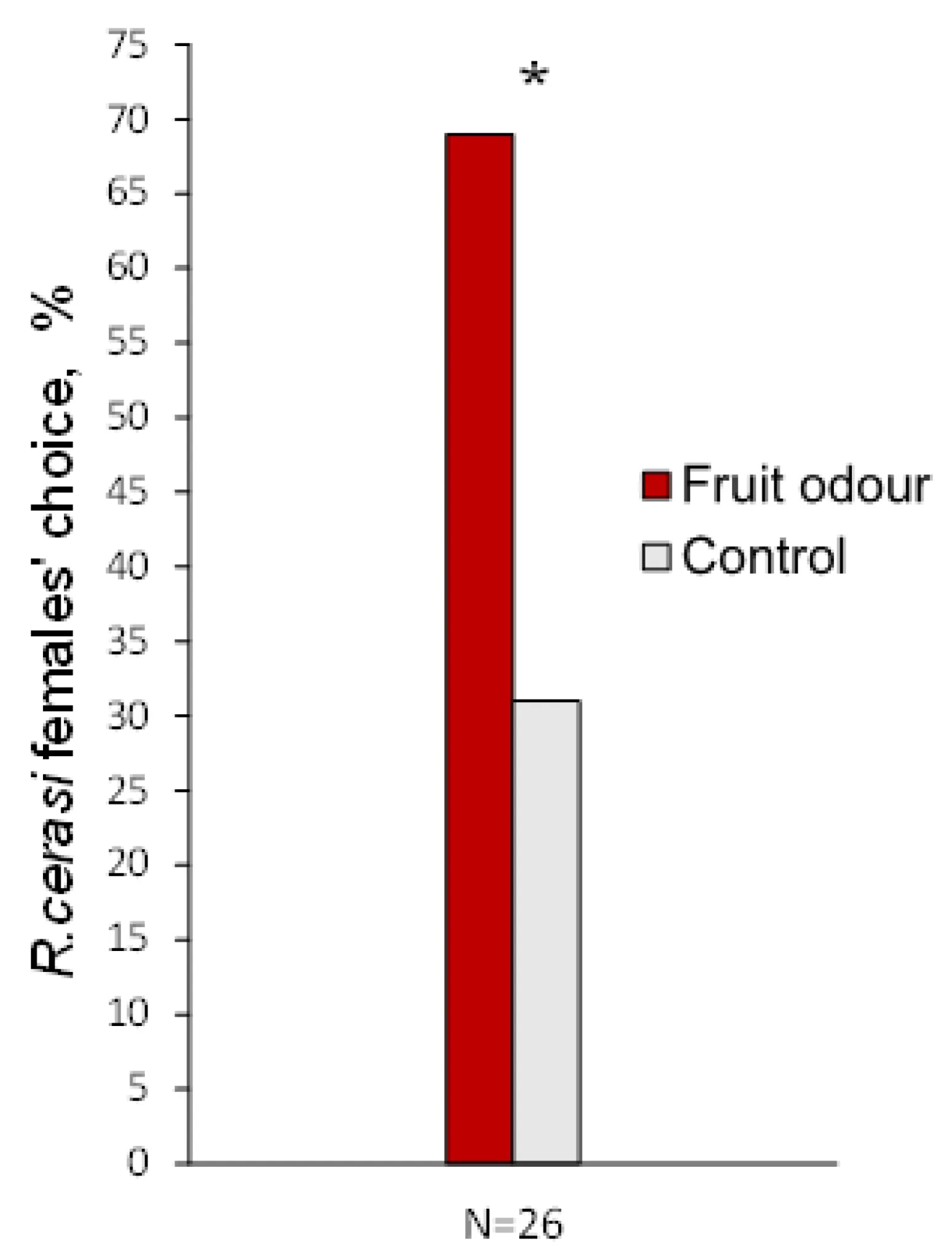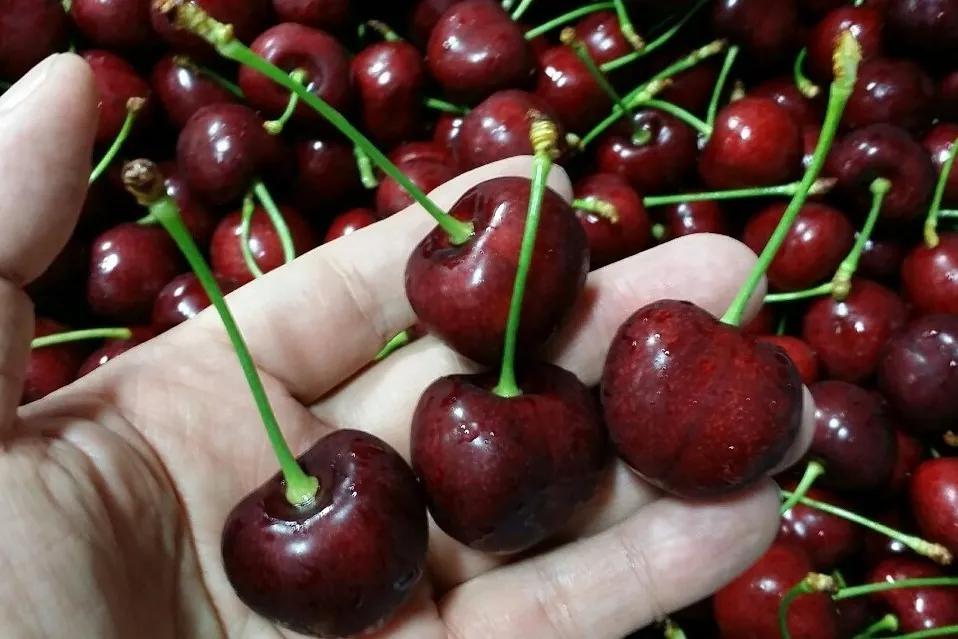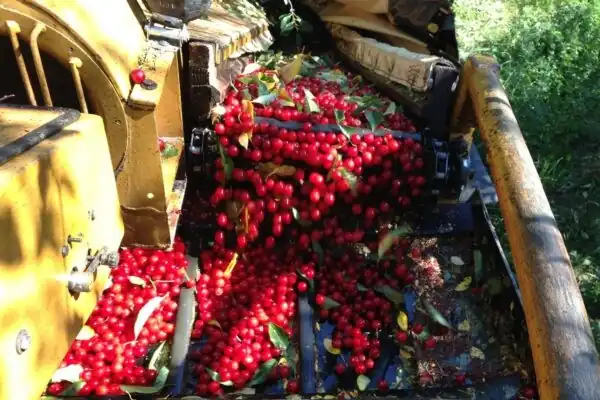The European cherry fruit fly, Rhagoletis cerasi, is one of the main insect pests affecting sweet and sour cherry cultivation in Europe, and its presence is also expanding in North America.
The females lay their eggs inside the fruit, making them unmarketable. Traditional insecticide treatments, once widely used, are now largely banned in Europe due to their environmental risks and concerns over food safety.
In this context, the search for effective and sustainable alternative methods to control the cherry fruit fly has become a priority. One of the most promising techniques is mass trapping, a system based on the use of traps equipped with specific chemical attractants that lure and capture adult insects before they lay eggs.
However, in order to make this method both economically viable and truly effective, it is essential to identify substances that selectively attract females, as they are responsible for the damage to the fruit.
Electrophysiological and behavioral responses
A study conducted in Lithuania in 2022 analyzed the electrophysiological and behavioral responses of female Rhagoletis cerasi to the volatile organic compounds (VOCs) emitted by sour cherry fruit.
The researchers collected VOCs from the headspace of the fruit and analyzed them using gas chromatography–mass spectrometry (GC–MS), identifying 51 different compounds, mainly belonging to the terpene and ester families, which together accounted for more than 60% of the total.
 Figure 1. Rhagoletis cerasi females’ choice of cherry fruit odour versus control in Y-olfactometer. Asterisk marks a statistically significant difference (* p < 0.05).
Figure 1. Rhagoletis cerasi females’ choice of cherry fruit odour versus control in Y-olfactometer. Asterisk marks a statistically significant difference (* p < 0.05).
Among the most abundant were the ester ethyl octanoate, followed by the terpene (E)-4,8-dimethyl-1,3,7-nonatriene.
Subsequently, using gas chromatography–electroantennographic detection (GC–EAD), 14 compounds were identified that triggered responses in Rhagoletis cerasi females, indicating that these substances are perceived by the insect’s olfactory system.
Laboratory behavioral testing
Five of these were selected for behavioral testing in the laboratory using an olfactometer. The results showed that three of these compounds were significantly attractive to females.
These were the terpenes (E)-β-ocimene and linalool, and the ester (Z)-3-hexenyl 3-methylbutanoate.
These three VOCs were classified as kairomones — substances emitted by one organism that, although not intended for communication, are beneficial to another species that detects them.
 Figure 2. Behavioural response of Rhagoletis cerasi fruit fly females to odorants in Y-olfactometer. Significant difference (* p < 0.05) is marked with an asterisk.
Figure 2. Behavioural response of Rhagoletis cerasi fruit fly females to odorants in Y-olfactometer. Significant difference (* p < 0.05) is marked with an asterisk.
In this case, the VOCs help female flies locate host fruits on which to lay eggs.
Implications for pest control
The attractiveness of these compounds was comparable to that of the full natural odor profile of the fruit, which provides a strong foundation for their potential use in the development of synthetic attractants.
Using one or more of these VOCs in traps could significantly improve the effectiveness of cherry fruit fly control.
At the same time, it could reduce the high costs of mass trapping, which currently make the technique difficult to apply on a commercial scale.
In conclusion, the study identified three key VOCs emitted by sour cherry that serve as cues for Rhagoletis cerasi females.
Sustainable agriculture prospects
These compounds can be synthesized and used as attractants for the control of this pest.
Their use in specific traps could provide effective protection for cherry orchards, in a way that respects the environment and meets the needs of organic production, thus contributing concretely to the protection and development of more sustainable fruit growing systems.
Source: Būda, V., Radžiutė, S., Apšegaitė, V., Blažytė-Čereškienė, L., Čepulytė, R., Bumbulytė, G., & Mozūraitis, R. (2022). Electroantennographic and behavioural responses of European cherry fruit fly, Rhagoletis cerasi, to the volatile organic compounds from sour cherry, Prunus cerasus, fruit. Insects, 13(2), 114. https://doi.org/10.3390/insects13020114
Image source: Buda et al., 2022; USU Exstension
Andrea Giovannini
University of Bologna (ITA)
Cherry Times - All rights reserved














